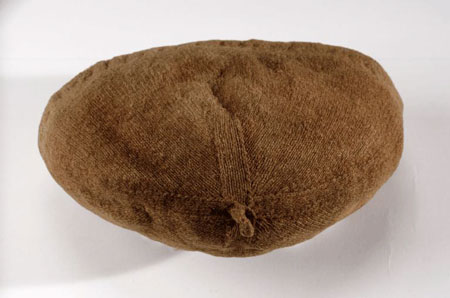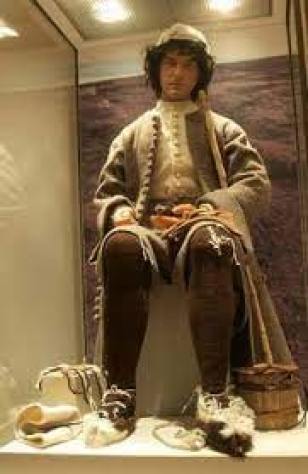With the Solstice behind us, we can look forward to 6 more seconds of daylight today. How will you use yours? I think it’s enough time to put a stamp on another holiday card. I’m really looking forward to January 24 when it rises to 2 minutes. Time to both stamp an envelope and pet the cat.
I like winter, although I find the darkness difficult. I’d have been really lost in the times before indoor lighting was confined to candles. I suppose I could have learned to knit in the dim light, but it would have been hard on the eyes. The other part is that all I really feel like doing is hibernating with a book and a cup of tea. I was going to make cookies this afternoon, but….well that didn’t happen.



Recently when the weather has been cooperative, we’ve been taking some small hikes around the area. This lovely spot is just up the road from us — a Native American site called the Rock House. That’s it on the left, although it’s quite a shallow space between the rocks, and not as sheltered as you’d want it to be if you actually were living there. Apparently it is known to have been used as a winter camp. It’s adjacent to a lovely pond. I love it when the trees are reflected in the water.

The first draft of the Gunnister hat is done and is blocked. It’s no where near the original other than in shape, and I figured out a few things in the process. First, the hem is too deep, and I won’t use a purl turning row on the next version. Second, it’s way too small (particularly considering that the original was felted), and while the cross shape came out ok on the top, I need to get the decreases to be less visible, and work out the final rows of the mitre. It appears to me that the mitre drops out on two sides, but that the other ones continue for another row or two to close the top. I also didn’t use the little pig tail at the top of the original on this version. I need to look at more of the photos again for comparison.


In my next version I’m going to try to come closer to the 3.25 sts/4.5 rows/cm after felting, although that’s less important to me than getting the overall construction correct. I have some 2-ply Shetland left over from a couple of projects, so will use that for the next effort to get closer to the original fiber. This is just one of the many difficulties of trying to get close to a reproduction of a museum object. Commercial yarn will never be a precise match to hand spun. On the other hand, I’m less concerned about that than trying to get an approximation of the original that can be knit and worn by contemporary knitters.
There is another cap with a brim that is more visually compelling and has been reproduced by a number of knitters, but I’m drawn to this simple and more homely piece. It was found in the man’s pocket, wrapped around his spoon. That gives you an idea of how this person thought about his possessions. The spoon needed protection to keep in from breaking. He also had a small knitted fragment showing an interesting pattern, and his stockings were heavily mended and patched. Nothing was wasted.

The textiles and other remains were displayed next to a police station on Shetland in 1951. More recently they were faithfully reproduced for an exhibition at the Shetland Museum (work completed on the clothing in 2009). The original textiles are now in the National Museum of Scotland (Edinburgh), and the reproductions can be found at the Shetland Museum in Lerwick.


Here are the swatches I knit for the next iteration of the cap. One was wet blocked solely so it would lay flat for measuring. The other was vigorously felted on my washboard. The Shetland yarn, which is generally described as “rustic” became quite soft and dense when felted. It didn’t shrink as much as I had expected, but gave me a good idea of the number of stitches to cast on.
I’ve made a good start, and am just at the point to begin the decreases. In two different publications these are described as “paired decreases,” so K2tog and SSK. That’s what I used on the first version, so I plan to do the SSK twisting only the first stitch to make the decrease lay a little flatter. We’ll see how it goes.
On the Needles
The first sweater I knit for Bruce (modeled here on the right) was not a great success. It’s a lovely sweater, but a bit snug around the middle and apparently too scratchy (knit from Gotland yarn). So I’ve begun a new one.
I’m a little concerned that I’ve erred on the side of scratchy again, having chosen a heritage wool from Scotland — North Ronaldsay.

These are the robust seaweed eating sheep found on the most northern of the Orkney Islands. I’m enjoying knitting with it (although I’m not much past the ribbing on the back). This will be a cabled sweater, and the hard spin on the yarn makes the cables really pop. In theory, this will be his Christmas sweater (certainly not for this year). Like his birthday socks, his knitted goodies arrive randomly, and never on the date of the original plan. That’s fine, as we aren’t very practiced gift givers, waiting for the mood to strike us rather than adhering to a schedule.


I’ve also started a sweater for myself, and for a change I’m using a pattern that I didn’t design. As you can see, Easy V by Caitlin Hunter. Top down and raglan is not my usual choice, but several of the people in my Wednesday knitting group are making it, and we’ve each challenged ourselves to use only stash and not buy anything new. We have raided each others’ stashes to get a specific color for the color work section, but otherwise it’s all about stash busting from our own “collections”. My main color is an oatmeal yarn called Cumbria from The Fiber Company. The color all are Malabrigio left-overs. Like Bruce’s sweater, I’m still in the ribbing section, so it will be a while before there is something to share.
Meanwhile……
This will be my last post for 2022 and because of some travel plans, you probably won’t hear from me again until nearly February. So, here’s wishing you the happiest of holidays and a healthy, prosperous New Year full of wool. Keep warm, and knit (crochet, weave, spin, embroider…..) on.